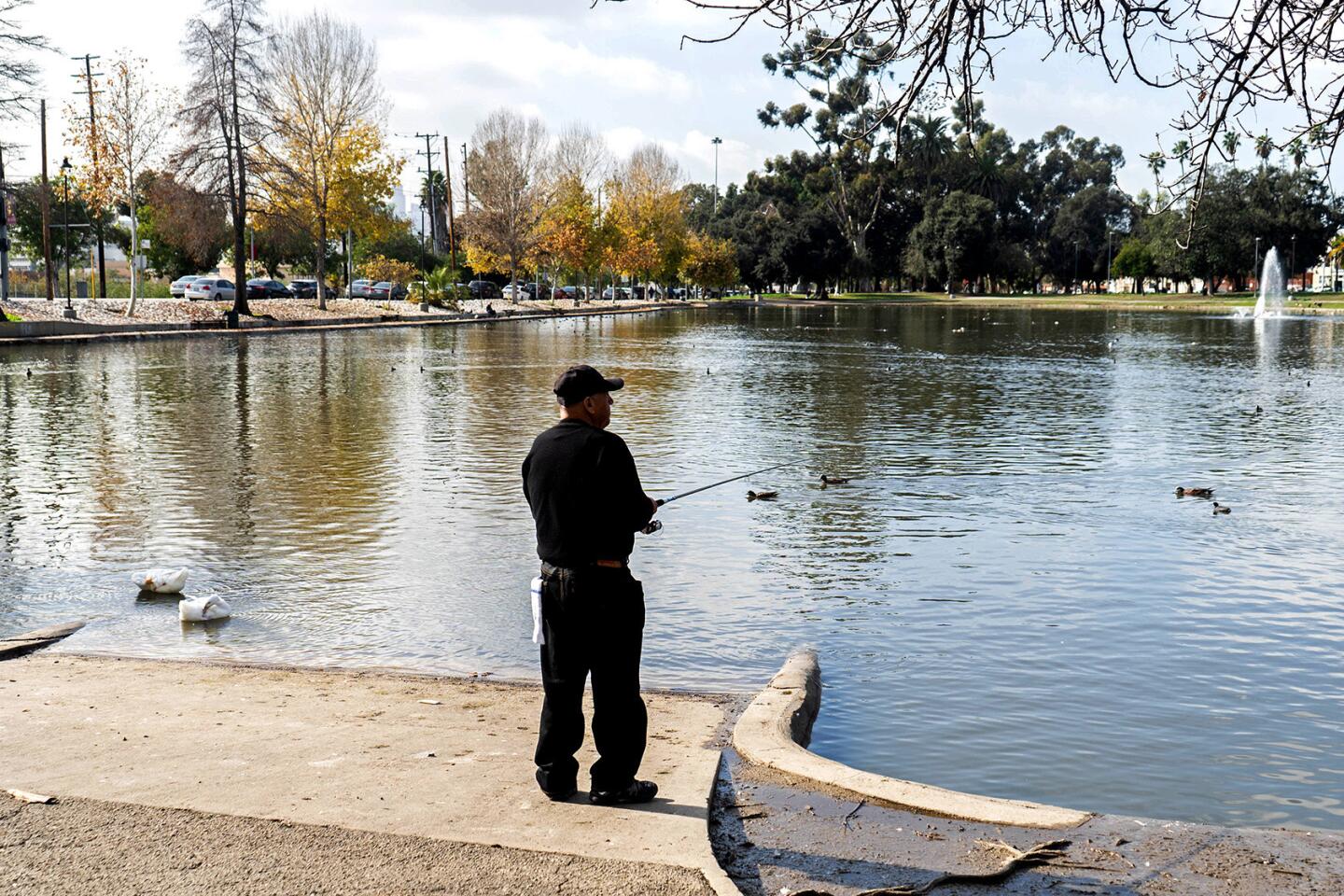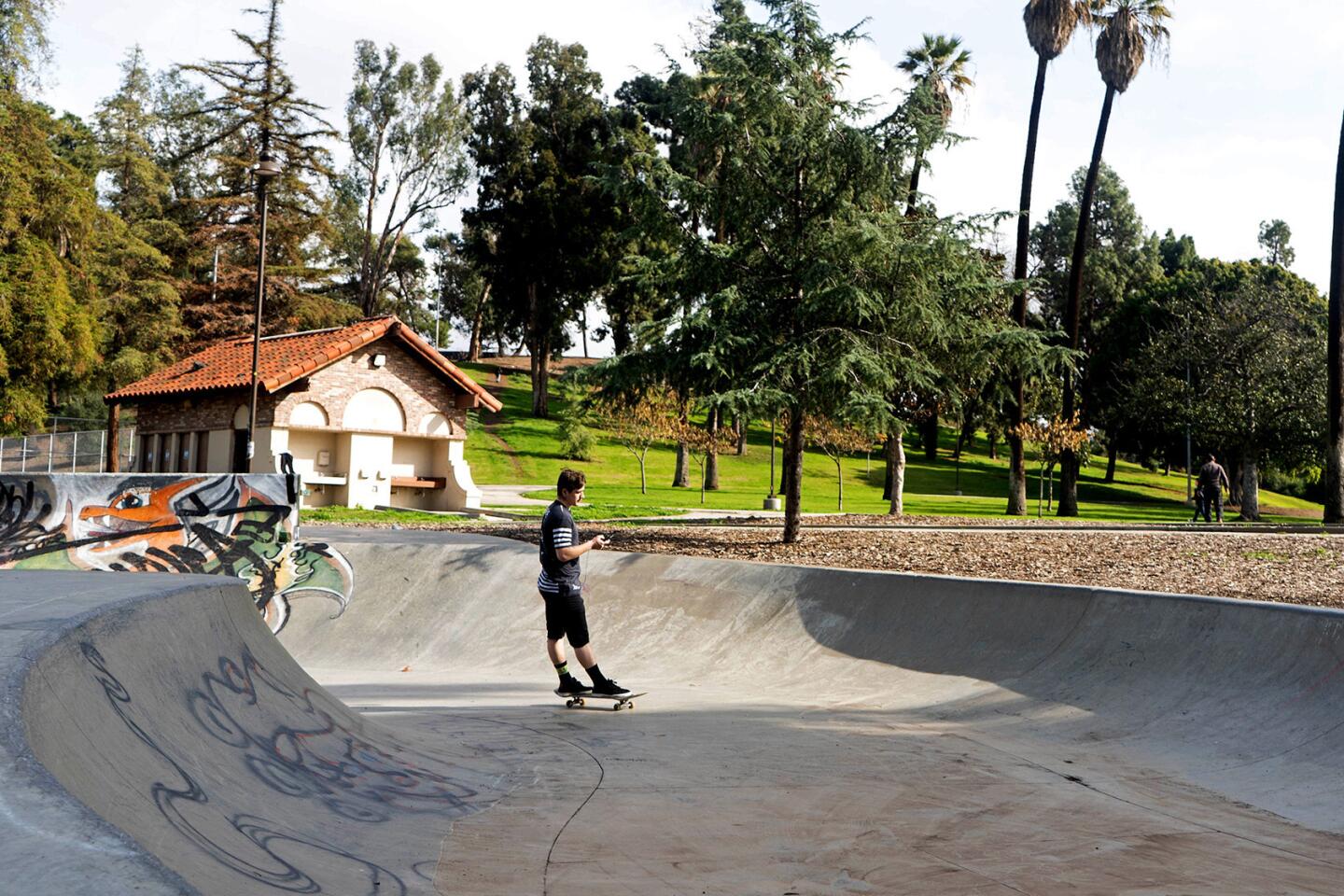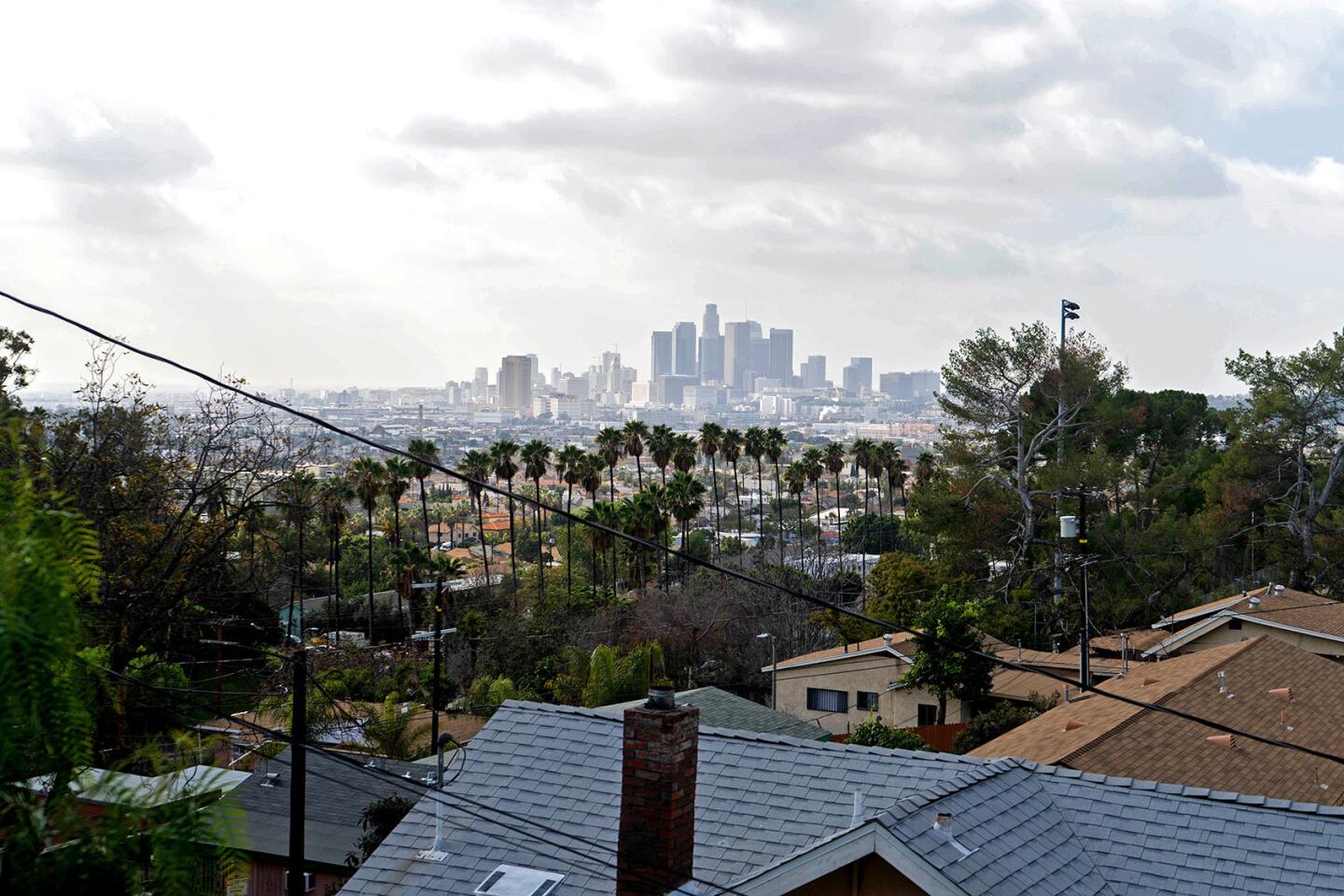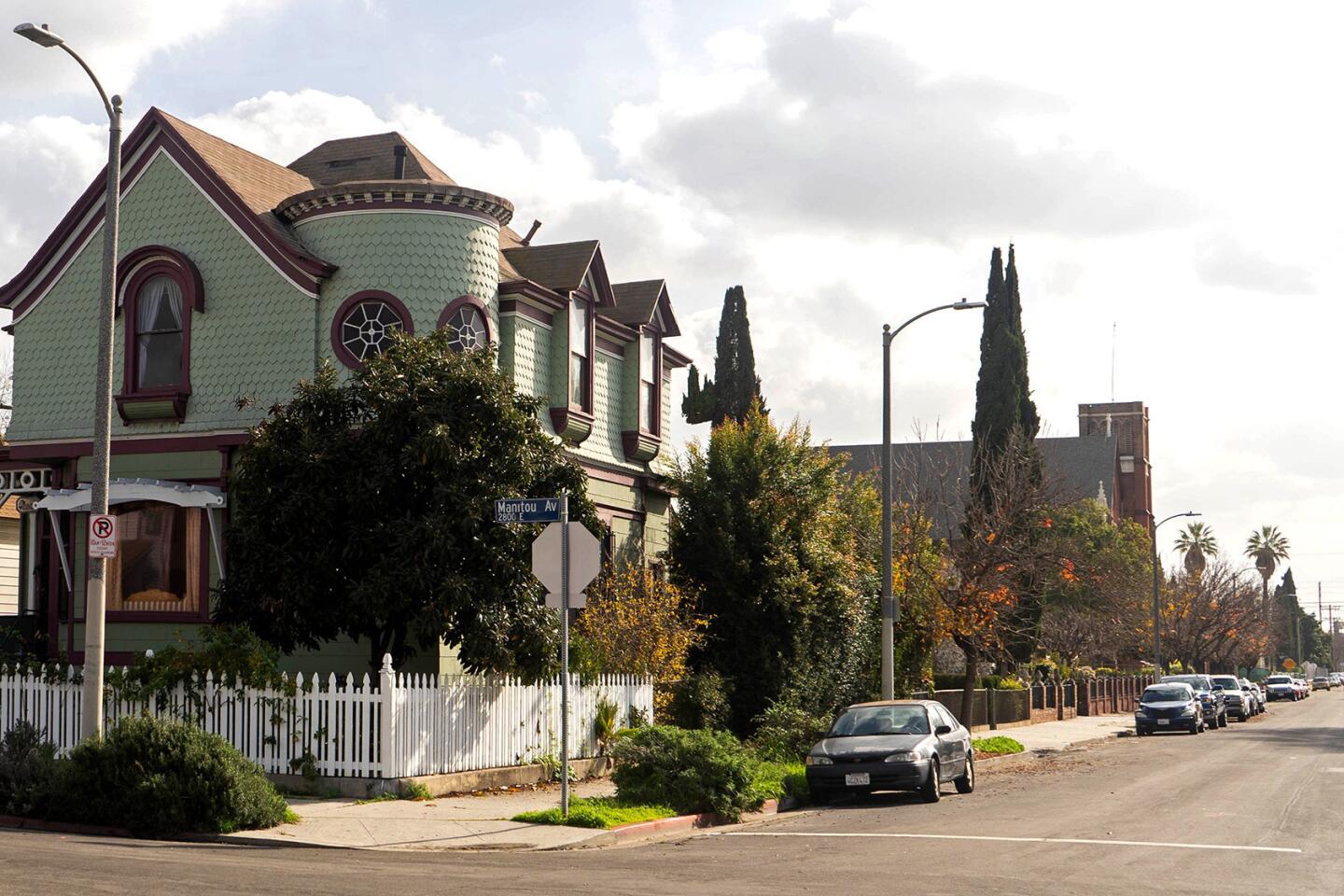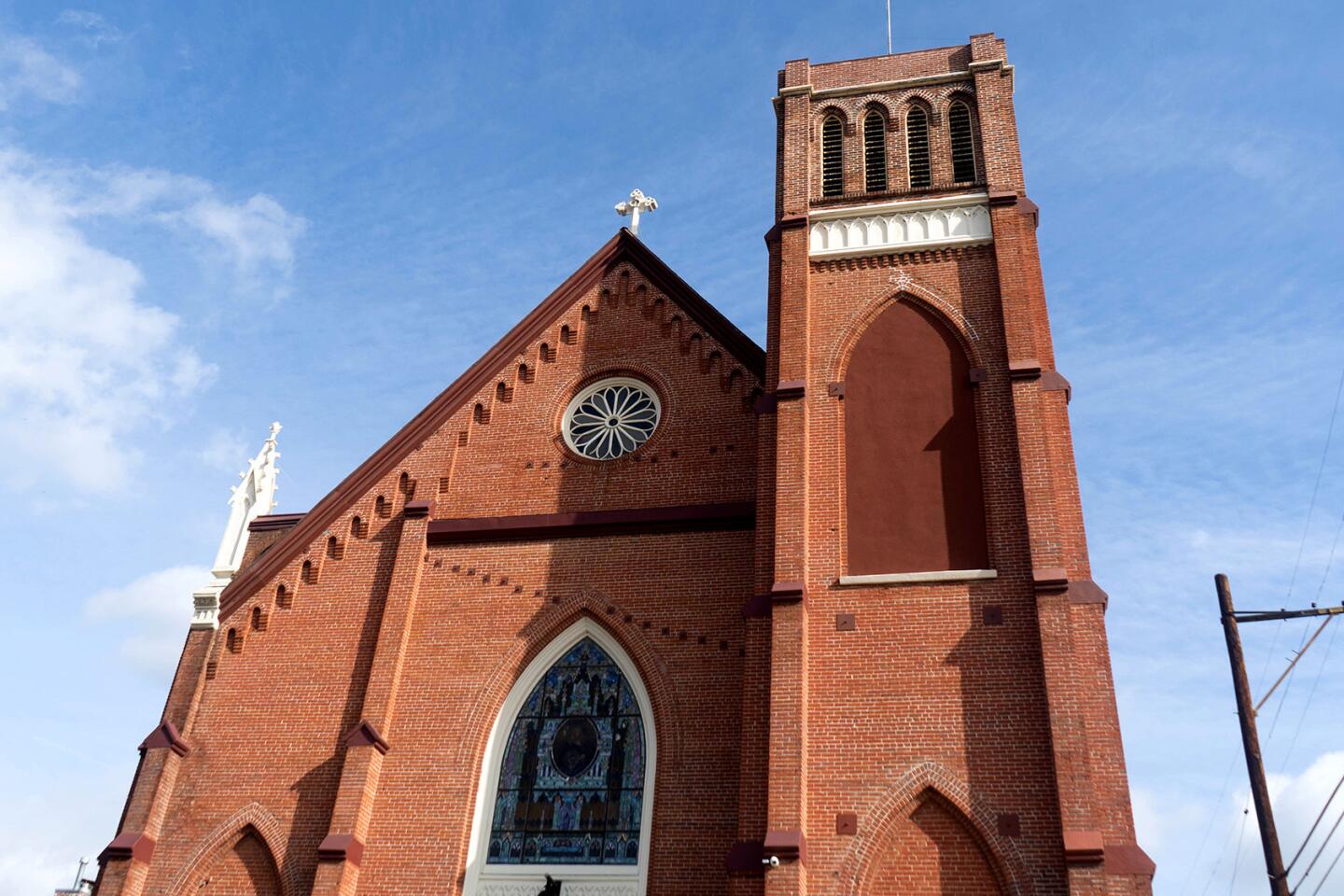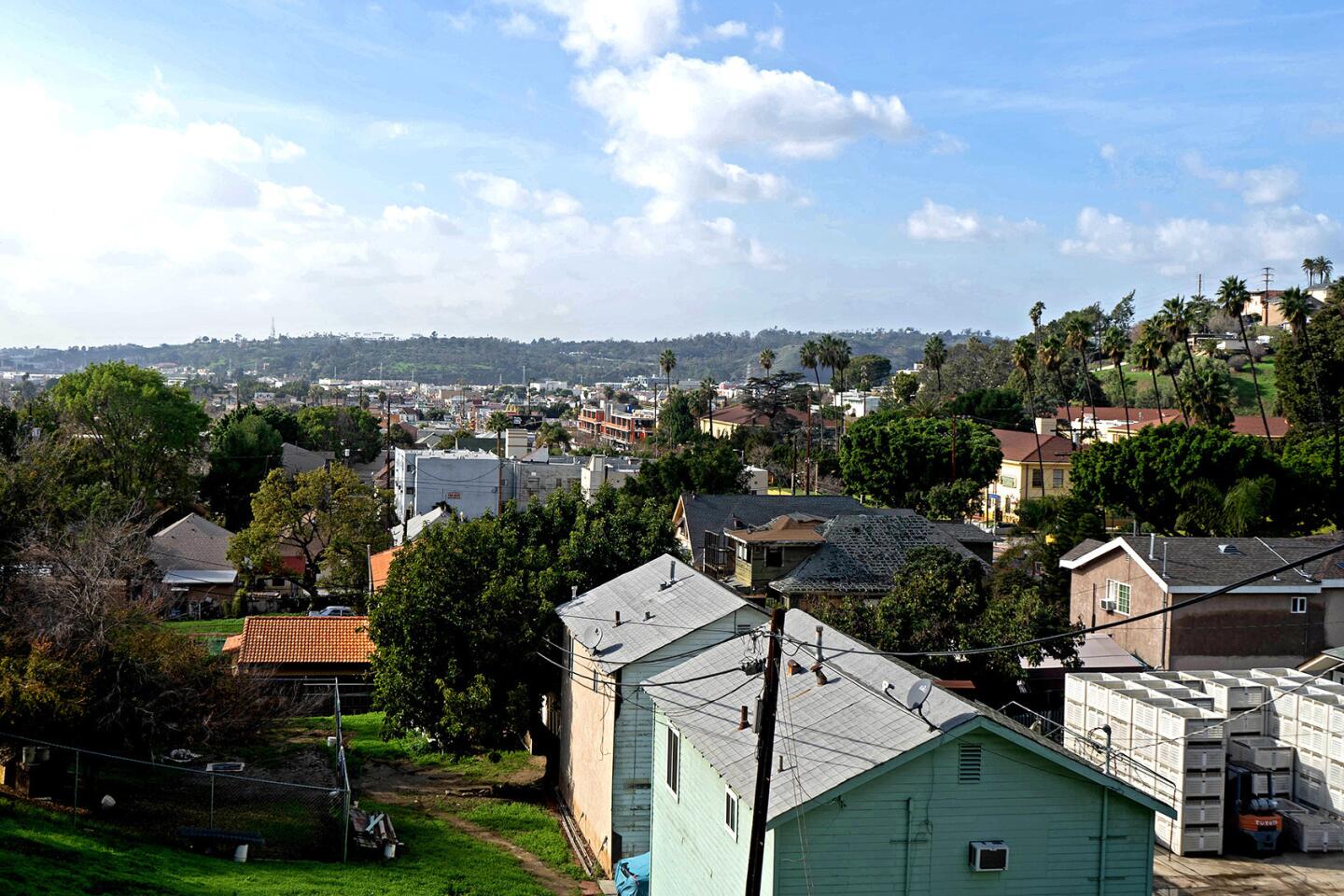Neighborhood Spotlight: Lincoln Heights was L.A.’s first suburb
- Share via
As the oldest suburb of Los Angeles, Lincoln Heights has been at the center of the city’s history for nearly 150 years.
First subdivided in 1873 as East Los Angeles, it was carved out of the 17,000-plus acres of the old Spanish pueblo by developers seeking to create a middle-class residential neighborhood.
To overcome the perception of most Angelenos that the region east of the river was a rusticated wilderness, lacking the amenities to which the burghers of Bunker Hill had grown accustomed, the developers installed water pipes to serve the new subdivision. They also initiated a horse-drawn streetcar — one of L.A.’s first — to ferry commuters to work and back.
Lots in the new tract went for $100 to $150, netting buyers 6,500 square feet of suburban land.
Many of the early residents were middle class, so the homes they built were in the Folk Victorian style, a more affordable version of the ornate mansions of the wealthy. Builders used pre-manufactured decorative elements shipped cross-country to be assembled on site, rather than expensive, bespoke carved gables and eaves.
In the beginning, the residents of those homes were mainly commuters, but soon the new neighborhood had its own employment centers. The public hospital that became Los Angeles County General opened its doors to patients in 1878, and in 1902 the Southern Pacific Railroad relocated its railyards to the new suburb.
The manufacturing of libations also played an important role in the neighborhood’s economy and continues to leave its mark today. An influx of Italian immigrants in the 1910s led to the area becoming a center of wine-making, of which the family-owned San Antonio Winery is an enduring example. And the former Pabst Blue Ribbon brewery and steam plant is now a 23-acre artist colony.
Even the nascent Los Angeles movie industry had an outpost in the neighborhood. The Selig Polyscope Co., producers of silent films starring Harold Lloyd and Fatty Arbuckle, moved there in 1914 from Edendale, an area named for a streetcar line that encompassed parts of Silver Lake and Echo Park.
In 1917, the neighborhood changed its name from East Los Angeles to Lincoln Heights, in honor of the local high school. Likewise the neighborhood’s Eastlake Park, which dates from 1881 and is one of the city’s oldest parks, became Lincoln Park.
Neighborhood highlights
A city’s story: With County General, the Lincoln Heights jail, the Brewery Art Colony, Lincoln Park and more within its boundaries, Lincoln Heights is a repository of Los Angeles history.
Architectural richness: Lincoln Heights’ diverse housing stock has something for fans of every classic L.A. residential architectural style, from the 1800s to the postwar boom.
The heart of the city: The proximity to downtown that made Lincoln Heights a popular suburb in the 1800s is still a prime feature, especially given the central city’s resurgence.
Neighborhood challenge
A lagging economy: The industries that created good jobs for residents of Lincoln Heights have long ago departed, leaving the neighborhood with one of the city’s highest poverty rates.
Expert insight
Stephanie Serrano, who spent 15 years buying and selling in the neighborhood, said home prices have slowly risen over the last five years, but an expensive house in Lincoln Heights is still a steal relative to the rest of the city.
“Most homes sell for somewhere between $400,000 and $600,000,” she said. “It makes for cheap house payments for families, and many of them rent out rooms for extra cash.”
Serrano added that the Brewery Art Colony and USC’s Keck School of Medicine attract students and young creative types, giving Lincoln Heights a bit more nightlife than neighboring communities.
Market snapshot
In the 90031 ZIP Code, based on nine sales, the median price for single-family homes in November was $632,000, down 16.7% year over year, according to CoreLogic. That ZIP Code includes both Lincoln Heights and Montecito Heights.
Report card
Of the seven public schools in the Lincoln Heights boundaries, Albion Street Elementary scored the highest on the 2013 Academic Performance Index at 811. Other highlights include Gates Street Elementary at 797 and Griffin Avenue Elementary at 746.
Abraham Lincoln Senior High, the neighborhood’s largest high school, scored 693.
Times staff writer Jack Flemming contributed to this report.
More to Read
Sign up for Essential California
The most important California stories and recommendations in your inbox every morning.
You may occasionally receive promotional content from the Los Angeles Times.

